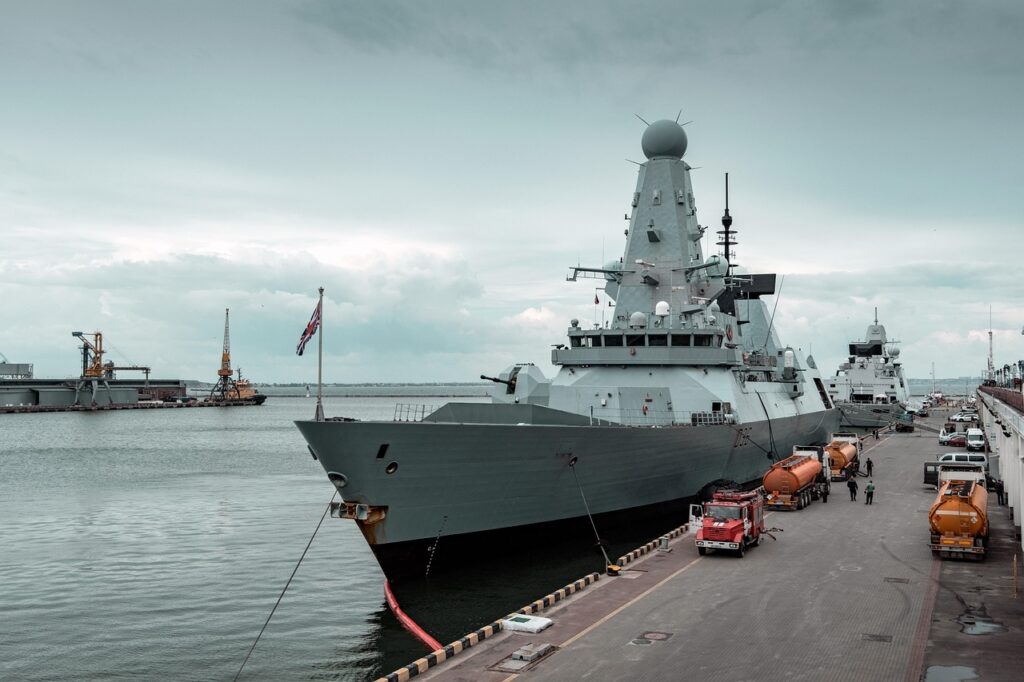In a significant display of military power, Romania’s Navy, alongside NATO allies, deployed ships, aircraft, and troops for a massive military exercise in the Black Sea. The operation, called “Sea Shield 25,” involved thousands of sailors, pilots, and marines, marking a major coordinated effort among NATO forces. The exercise, which began in early April, aims to enhance regional security and readiness in the face of modern military threats.
Massive International Participation:
Approximately 2,600 troops and dozens of vessels from 12 NATO nations took part in the exercise. Romania, the host country, committed 1,600 soldiers, collaborating with key partners, including the United States, United Kingdom, France, and Turkey. Together, the forces simulated various military scenarios, ranging from maritime incursions to aerial attacks and cyber disruptions. This coordinated effort showcased NATO’s ability to respond to a wide variety of modern threats.
Scenario-Based Training and Tactical Drills:
During one of the key scenarios, radar detected an unidentified target, triggering a full fleet alert. NATO’s air units quickly scrambled, while an IAR 330 Puma helicopter was deployed to investigate the threat. The drill highlighted the importance of rapid response, joint communication, and seamless coordination among the allied forces. These real-time training simulations are essential to ensuring the preparedness of NATO troops for real-world conflicts.
Allied Forces Respond to Hybrid Threats:
In addition to traditional military threats, the exercise also focused on hybrid warfare, such as cyberattacks, chemical, and radiological threats. Special forces and combat divers participated in simulations, addressing complex wartime conditions. The Black Sea Task Group, tasked with mine countermeasures, practiced removing explosive threats from the sea floor. These specialized exercises are crucial for ensuring that NATO forces are prepared for all types of modern warfare scenarios.
Lieutenant-Commander Cătălin Harabagiu emphasized the significance of teamwork during the exercise, noting that all participating units had to work closely together to overcome challenges. The crews onboard Romania’s ‘King Ferdinand’ frigate, for example, coordinated efforts to neutralize floating mines. These drills were crucial for improving interoperability between NATO members, ensuring that they can work together seamlessly in future missions.
Training Across Land, Sea, and Air:
The exercise was designed to simulate modern multi-domain warfare, with NATO forces operating across land, sea, and air. Troops practiced defending key infrastructures like supply lines, ports, and civilian areas from potential attacks. Real-time data and battlefield simulations were used to coordinate strategic movements, ensuring that commanders could make informed decisions under pressure. The exercise was conducted day and night, ensuring that NATO forces maintained high readiness across all command levels.
NATO’s Continued Focus on Readiness and Technological Superiority:
Rear-Admiral Cornel Cojocaru, the exercise’s Romanian commander, stressed the importance of ongoing preparedness given the current regional instability. He pointed to Russia’s actions in the Black Sea and its ongoing military operations against Ukraine as significant threats that require NATO’s focus. Cojocaru stated that Romania must continue investing in modern defense systems and highly skilled personnel to keep pace with evolving threats.
He also noted the necessity for NATO to remain flexible and technologically advanced in the face of these regional dangers. The exercise allowed NATO allies to refine their coordination and strengthen their defense strategies. This focus on deterrence and rapid response is vital in a contested maritime environment like the Black Sea.
Romania’s Push for Modern Fleet Capabilities:
As the Black Sea remains a hotspot for military tensions, Romania continues to push for the modernization of its naval fleet. The country is working to upgrade its naval capabilities to better defend against threats posed by advanced Russian surface ships, submarines, and aircraft. NATO’s “Sea Shield 25” was a critical step in ensuring that all participating nations are capable of responding quickly and effectively to any future challenges in the region.
The “Sea Shield 25” exercise, which concluded on April 11, showcased NATO’s strength, unity, and readiness in the face of evolving military threats. By simulating a wide array of potential security scenarios, NATO demonstrated its ability to respond to both conventional and hybrid threats. The operation reaffirmed the alliance’s commitment to regional stability and its readiness to defend member nations against emerging security challenges.
